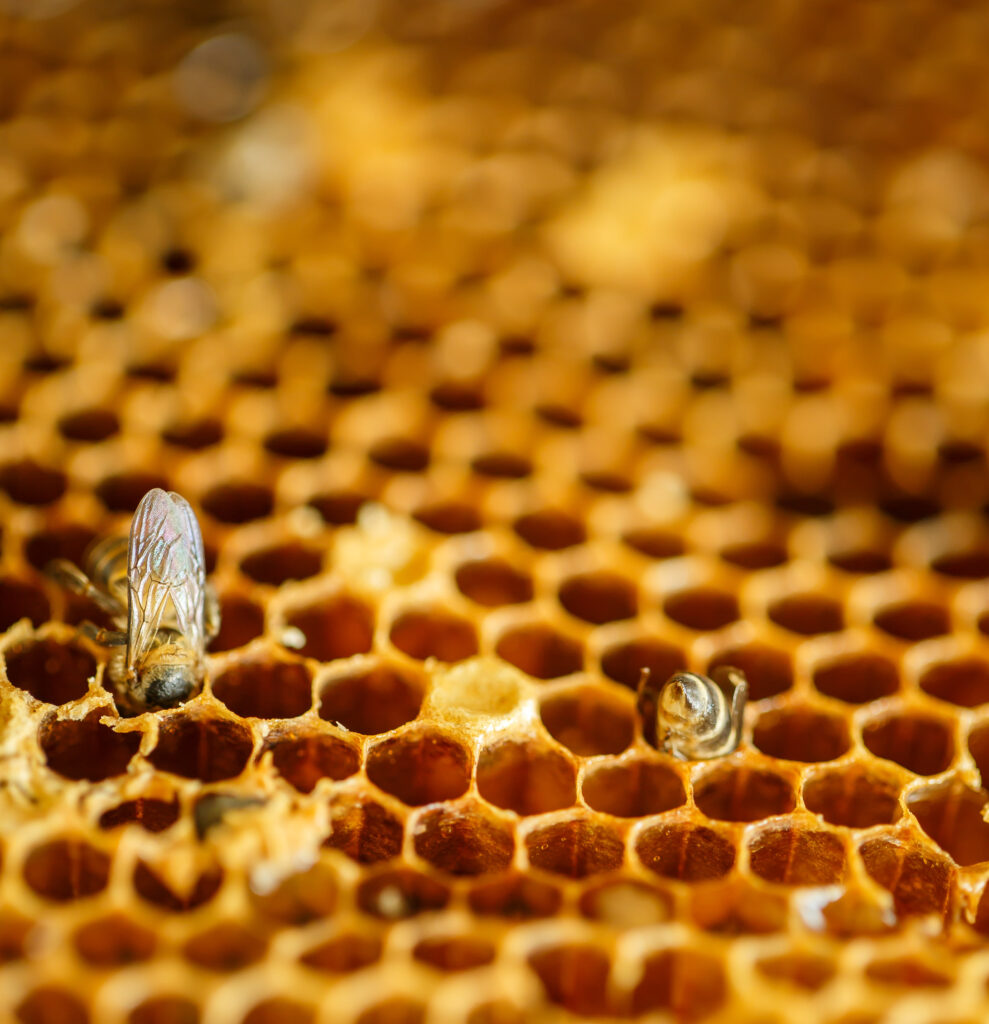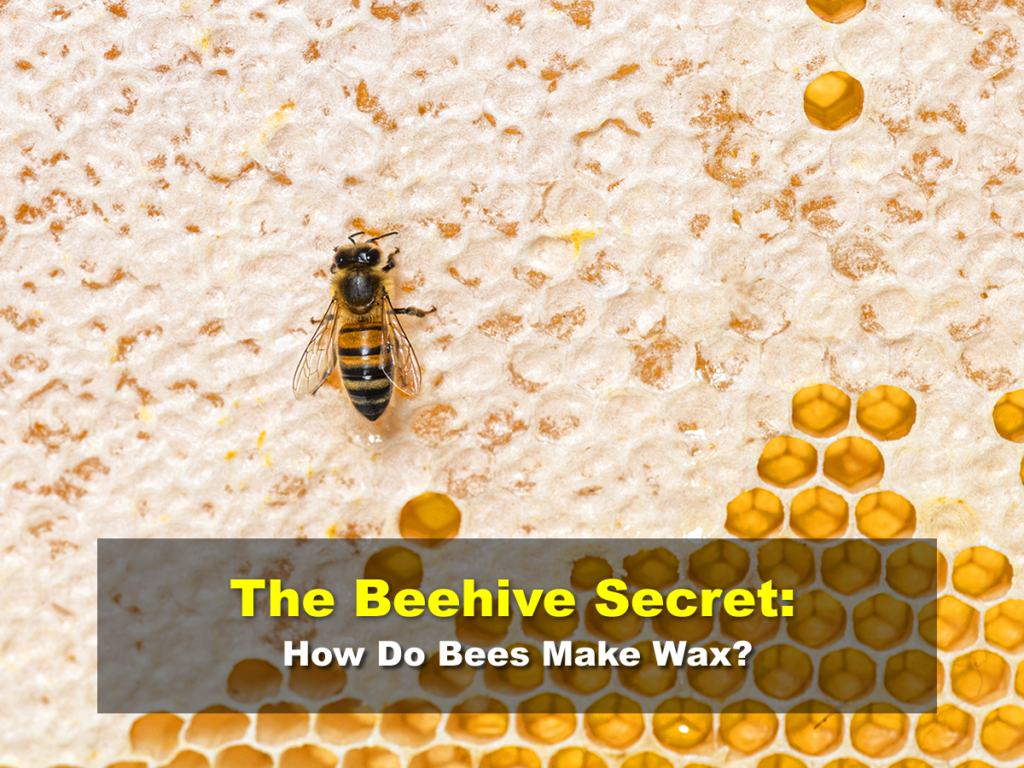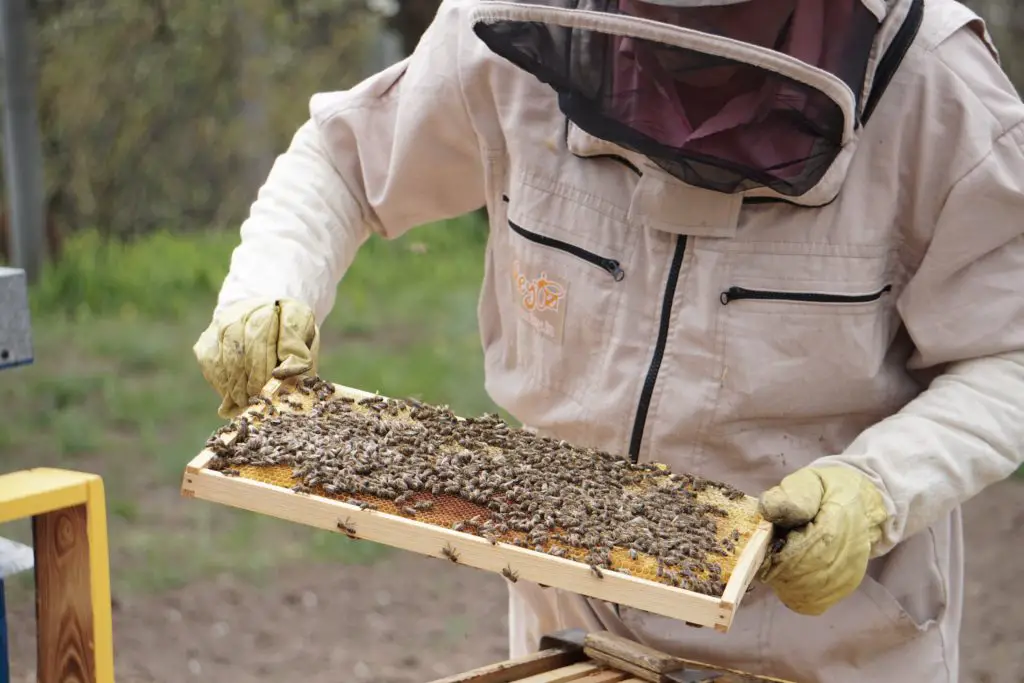Affiliate Disclaimer - As an Amazon Associate I earn from qualifying purchases.
It supports the website. So, Thank you
If I were to ask you what product bees make, you’d probably say honey. That’s a perfectly valid answer and honey is indeed one of the most important things a colony of bees makes. But it isn’t the only substance to come out of the hive; bees also make wax but how do bees make wax and what is it used for?
Bees have to increase the temperature within the hive in order for the sugars in honey to be converted into wax. This is an important substance as the bees will use it to seal the honeycomb and keep their precious honey safe.
The process of making wax and how it is used is certainly an interesting one and I’d love to go into more detail. So, keep reading and let’s find out more!
Table of Contents
What Is Beeswax Made From?
Beeswax is a completely natural substance but what it contains can vary depending on the species that made it. However, generally speaking, wax is made from free fatty acids, alkenes, alkanes, diesters, monoesters, and hydroxy monoesters.
How Bees Make Wax
It is only the female worker bees that make wax. The male bees, called drones, only have one responsibility in life and that is to mate with the queen.
The initial part of the process involves the worker bees heading out to forage for nectar. They do this in order to make honey and you can find a detailed guide on how bees make honey here.
The nectar is stored in a second stomach that’s designed purely for this purpose. When the worker bees get back to the hive, they are met by other workers and they’ll pass the honey between themselves. The reason for this is that it gradually reduces the water, turning the nectar into honey.
In order to make just one pound of wax, a group of worker bees would need to visit around 30 million flowers! When I say that bees are hardworking, I’m not exaggerating!
Once the bees have their honey, they need to start processing some of it into wax which they do by raising the temperature in the hive. They huddle closely together until the internal temperature gets to around 33 degrees Celsius; that’s around 91 degrees Fahrenheit. At this temperature, the wax can be converted from honey in the wax glands located on the abdomen of the bees.
When it is fully converted, the wax comes out of tiny pores on the abdomen and it looks as though the bee has formed little scales. Now other worker bees will come along to chew the wax away and continue to alter the consistency so that the wax can be used to cap the comb.
An interesting fact about beeswax is that the color is different depending on the age and color of the honey used to make it. Initially, the wax doesn’t have a color at all and simply appears clear. However, as it is used, the color gradually becomes darker and takes on a more yellowish hue.

Why Do Bees Make Wax?
We all know that bees make honey as a source of food to survive through the winter but what’s the point in wax? Well, as it happens, it’s pretty important as one of the main reasons that bees make it is to seal off the honeycomb cells to protect the honey stored within. When winter comes, the honey will still be fresh and ready for the bees to eat when they need it.
But this isn’t the only way wax is used within the hive; it’s also essential in protecting the young. When the queen lays her eggs, she does so within the honeycomb and to make this, bees use wax. They will also use the same wax to plug holes in which eggs have been laid in order to keep them safe.
Is It Only Honey Bees That Make Wax?
You could be forgiven for thinking that only honey bees make wax since this is a substance made from honey. But bumble bees are also capable of making honey and are therefore able to make wax as well.
They use this to make nectar pots as well as for protecting their eggs but in this case, it’s not teamwork and everything comes down to the queen.
You see, bumble bees function in a very different way to honey bees, most notably in the size of their colonies. They’re mostly a solitary species but queens will lay eggs and take care of a small brood of around 50 to 250 individuals until she dies. When winter comes, bumble bee colonies do not survive; it’s only a pregnant queen that will make it through to spring to lay her eggs.
Once the queen has found somewhere to nest, usually in the ground, she will start making her wax. Just like the honey bee, she has pores on the bottom of her abdomen through which the wax is secreted.
It’s worth noting that not all species of bumble bees make wax. The cuckoo bumble bee, for example, lays its eggs in a host nest so there is no need to form protective wax cells to keep the eggs safe.
How Do Humans Use Beeswax?
Humans have harvested bee products for thousands of years. There’s evidence to suggest that the art of beekeeping dates back more than 10,000 years. What’s more, cave paintings in Spain depict a man taking honey from a wild hive and this was over 15,000 years ago!
Not much has changed since then other than the way we harvest bee products. While honey remains the most popular bee product, wax is certainly up there and humans have found many uses for it.
One of the most common uses is within personal care products. Beeswax lip balms are incredibly popular because of the wax’s ability to create a barrier and lock in moisture. For this very same reason, you may also find it in things like skincare products. This is also because the wax has softening properties and contains anti-inflammatories, antioxidants and antibacterial properties.
If that wasn’t enough, beeswax is also favored around the home for things like polishing your furniture. You’ll probably have used a beeswax polish and, if you have, you’ll appreciate what a shine this can bring to your wood. What’s more, it’s brilliant for waterproofing your shoes, making crayons for kids, and giving your bronze items a new lease of life.
Modern-day candle makers are all about using natural products so it won’t come as much of a surprise that beeswax is a key ingredient. There are also a ton of tutorials online on how to make your own beeswax candles which is a great way to save money!
Final Thoughts
After producing honey, worker bees continue the process in order to make wax. Looking at how do bees make wax, we can see that it comes down to teamwork, just the same as honey production. The worker bees must collectively gather nectar, reduce the water content, and pass the substance between one another before secreting it from their wax glands.
This wax is then used to plug the honeycomb holes when storing honey or for protecting eggs. Even humans have realized the benefits of beeswax and it’s commonly used in a whole host of products.




